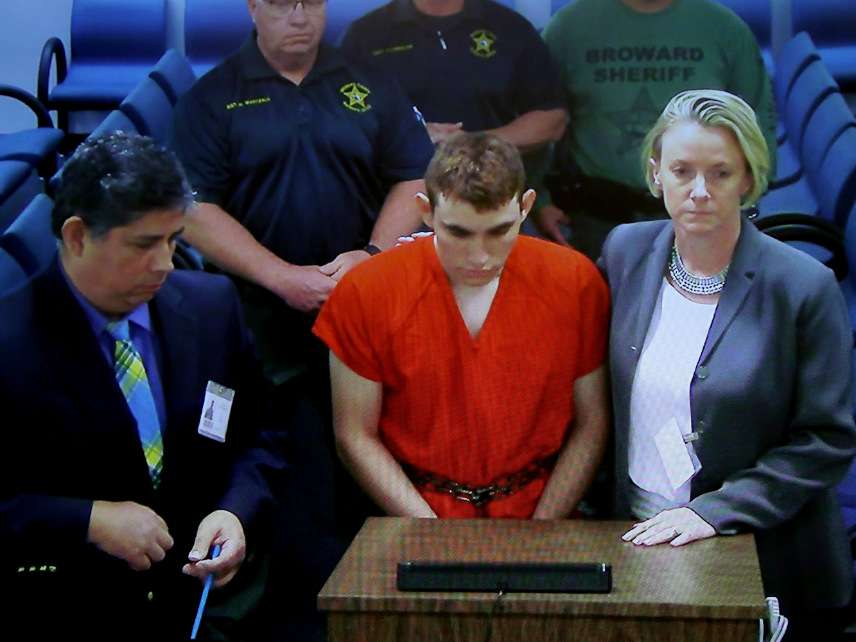None of These Popular Gun Control Proposals Would Have Prevented the Parkland Shooting
Policies favored by both experts and the public would not have prevented the Florida shooting.

A graph in The New York Times—published last year, but circulating again on social media in the wake of the Parkland massacre—attempts to map the popularity of different policy responses to mass shootings, both among experts and among the general public:
Thread.
Also, it's stunning that so many ideas are up in the upper-right—i.e., popular *and* supported by experts—but cannot pass because of the NRA, its supporters, and their allies in Congress. https://t.co/fcAXlSdqVo
— Jonathan Cohn (@CitizenCohn) February 15, 2018
Notably, none of the policies ranked both effective and popular appear likely to have stopped Wednesday's grisly shooting.
Universal background checks? Nikolas Cruz—the man charged with the shootings—purchased his AR-15 legally at Sunrise Tactical Supply, according to a law enforcement official who spoke with the Associated Press. A special agent at the Bureau of Alcohol, Tobacco, Firearms and Explosives told The New York Times that Cruz passed a federally mandated instant background check, saying, "No laws were violated in the procurement of this weapon."
Another policy beloved by both the public and the surveyed public safety experts is a prohibition on violent criminals possessing guns. Cruz however had no criminal history.
One of the less punitive policies plotted on the New York Times graph is expanded mental health treatment. Broward County Mayor Beam Furr says Cruz had been receiving treatment at a mental health clinic, but stopped going about a year ago. One could well make the argument that continued therapy might have prevented Cruz from committing the crimes he did, but it is clear he had access to therapy.
Policies deemed effective but slightly less popular include bans on assault weapons and high-capacity magazines. As any number of firearms experts have stated, "assault weapon" is a political classification, not a technical one. It does not denote enhanced lethality, as everything from a folding stock to a bayonet mount can get a firearm labeled an "assault weapon." The 1994 Assault Weapons ban prohibited the AR-15 on these cosmetic grounds, but even if this law were in effect today, Cruz could still have carried out his crime with an equally lethal, albiet less flashy weapon.
High-capacity magazines are likewise something of an artificial category. Media reports list everything from a 60-round magazine to a 16-round magazine as high-capacity. Of the states that do restrict magazine size, most draw the line at the 10-round mark. As of right now, we do not know the size of the magazines Cruz used, though a 30-round magazine for an AR-15 is considered standard. In any case, the fact that Cruz was reportedly actively shooting students and faculty for several minutes before police arrived suggests he would not have been slowed much by having to stop and reload more frequently.
In addition, the fact that there already exist a huge number of high-capacity magazines and can be purchased for as little as $13 means that actually enforcing any prohibition of the things would face huge practical hurdles.
Mass shootings are horrific, and any measures that might reduce their frequency are worth considering. However, most of the policies favored by experts and the public would have done nothing to prevent this latest tragedy.
Rent Free is a weekly newsletter from Christian Britschgi on urbanism and the fight for less regulation, more housing, more property rights, and more freedom in America's cities.




Show Comments (224)